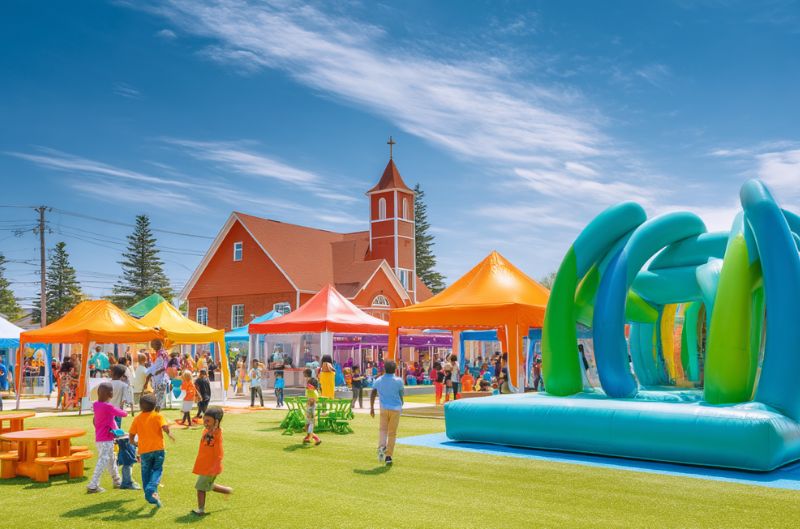
How a Church Playground Builds Community Bonds
Author: Austin Stanfel
One church playground quietly transforms its neighborhood in a world where community connections can feel increasingly fragmented. Through the simple, universal language of play, it unites families, fosters friendships, and turns faith into action.
A Vision for Community
The story begins with a vision: to create a space where children could laugh and explore, parents could relax and connect, and neighbors, whether church members or not, could feel welcome. After years of planning, collaboration, and commitment to serving their congregation and the broader community, some churches made this vision a reality. Its playground, tailored for all ages, is a testament to the power of intentional design and inclusive outreach.
More Than Just a Playground
A playground is a place designed solely for children. However, at Sage Hills and many other churches, these spaces serve a much deeper purpose:
- A Welcoming Invitation: A playground signals to families that they are valued and that children are tolerated and celebrated. It makes the church more inviting and family-friendly, encouraging new families to visit and existing members to stay engaged.
- A Hub for Connection: Playgrounds naturally draw people together. Parents chat on benches while their children play, friendships form across generations, and newcomers find an easy entry point into the community. These interactions extend beyond Sunday services, as families return for playdates and weekly gatherings.
- A Catalyst for Outreach: The church extends hospitality beyond its walls by opening the playground to the public. Community events, festivals, and outreach programs in these spaces foster trust, break down barriers, and introduce the church to those who might never have attended a service.
Designing for All Ages and Abilities
The Sage Hills playground exemplifies modern, thoughtful design. With areas for toddlers, elementary-age children, and even older kids, it ensures that siblings and friends of different ages can play together. Features like a 12-foot tower, rope bridges, and imaginative play elements spark creativity and teamwork, while inclusive equipment welcomes children of all abilities.
Other churches have taken similar approaches, incorporating themes from religious stories or local culture and adding amenities like shaded seating and picnic tables to encourage extended visits and intergenerational interaction.
Bringing Faith Lessons to Life
For many families, the playground is not just about recreation but an extension of the church’s mission. Leaders and teachers use the space to bring faith lessons to life, acting out stories, organizing team-building games, and helping children connect spiritual concepts with real-world experiences. This hands-on approach makes faith tangible and memorable for young minds.
Strengthening the Fabric of Community
The impact of a church playground ripples outward:
- Attracting and Retaining Families: A vibrant play space can be a deciding factor for families seeking a new place of worship. It demonstrates a commitment to nurturing the next generation and supporting parents in their faith journey.
- Supporting Healthy Lifestyles: Regular outdoor play promotes physical, emotional, and social well-being for children, while parents benefit from fresh air and fellowship.
- Building a Stronger Congregation: Bonds deepen as families spend time together on the playground. These relationships often translate into greater involvement in church programs, volunteerism, and a shared sense of purpose.
Conclusion
A church playground is far more than a collection of slides and swings. It is a living symbol of hospitality, inclusion, and hope. Churches like Sage Hills build bridges between generations, neighbors, faith, and everyday life by bringing people together through play. In doing so, they remind us all that sometimes, the simplest ideas can unite us in the most profound ways.

